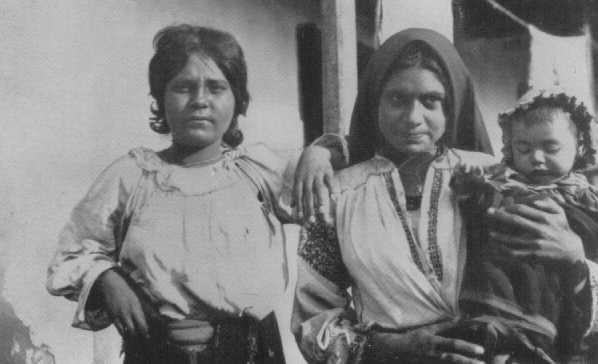
Roma (Gypsies) in Prewar Europe
Roma (Gypsies) originated in the Punjab region of northern India as a nomadic people and entered Europe between the eighth and tenth centuries C.E. They were called "Gypsies" because Europeans mistakenly believed they came from Egypt. This minority is made up of distinct groups called "tribes" or "nations."
Most of the Roma in Germany and the countries occupied by Germany during World War II belonged to the Sinti and Roma family groupings. Both groups spoke dialects of a common language called Romani, based on Sanskrit (the classical language of India). The term "Roma" has come to include both the Sinti and Roma groupings, though some Roma prefer being known as "Gypsies." Some Roma are Christian and some are Muslim, having converted during the course of their migrations through Persia, Asia Minor, and the Balkans.
For centuries, Roma were scorned and persecuted across Europe. Zigeuner, the German word for Gypsy, derives from a Greek root meaning untouchable.
Roma (Gypsies) in Prewar Europe
Many Roma traditionally worked as craftsmen and were blacksmiths, cobblers, tinsmiths, horse dealers, and toolmakers. Others were performers such as musicians, circus animal trainers, and dancers. By the 1920s, there were also a number of Romani shopkeepers. Some Roma, such as those employed in the German postal service, were civil servants. The number of truly nomadic Roma was on the decline in many places by the early 1900s, although many so-called sedentary Roma often moved seasonally, depending on their occupations.
In 1939, about 1 to 1.5 million Roma lived in Europe. About half of all European Roma lived in eastern Europe, especially in the Soviet Union and Romania. Hungary, Yugoslavia, and Bulgaria also had large Romani communities. In prewar Germany there were at most 35,000 Roma, most of whom held German citizenship. In Austria, there were approximately 11,000 Roma. Relatively few Roma lived in western Europe.
Critical Thinking Questions
- Investigate how Roma were treated in Europe before 1933. How did the Nazis build on existing attitudes?
- What information in this and other articles counters stereotypes of “Gypsies” that persist today?
- How are the Roma treated in countries in Europe today? How have neighboring countries and the world community responded?



